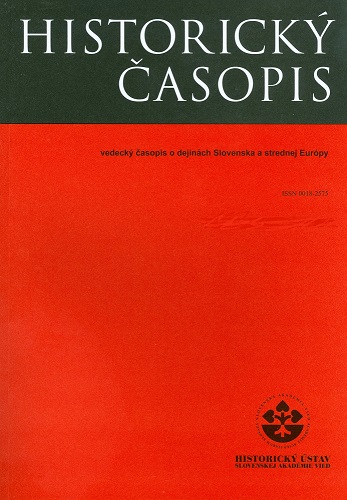Keď ariánski vandali ovládli starší rím... reflexie byzantských autorov k otázke jednoty cirkvi po roku 1054
When Arian Vandals conquered ʽElderʼ Rome…. The Byzantine Authors and Their Views on Church Unity after 1054
Author(s): Martin HurbaničSubject(s): History, Cultural history, Comparative history, Diplomatic history, History of ideas, Political history, Middle Ages, 6th to 12th Centuries
Published by: SAV - Slovenská akadémia vied - Historický ústav SAV
Keywords: Anti-Latin Polemics; Arian Vandals; Schism of 1054; Michael Keroullarios; Peter of Antioch; Orthodox Church
Summary/Abstract: One of the consequences of the so-called Great Schism of 1054 was the establishment of a permanent religious controversy between the Roman Catholic and Orthodox Christians. The contemporaries of this event (Michael Keroullarios and Peter of Antioch) had marginalised its effects on the relations of both churches. Yet, they formulated their views on the issue of religious unity by pushing the origin of the schism deep into the past. Accordingly, we can find later statements in anti-Latin polemics influenced by the events of 1054. Among others, the motif of the religious apostasy of Rome and the alleged corruption of the Latin faith by the Arian Vandals appears here. In so doing, the Byzantine authors wanted to emphasise that it was Rome and its popes who were responsible for the religious purity in their patriarchate, that means, in the administrative area of the Latin West. According to the Byzantine ethnography, various barbarians represented the same entity, regardless of their respective name. Subsequently, the non-distinction between the ethnonyms Goths, Vandals, and Franks by the Byzantine authors made it possible to introduce a further motif, that of another Vandal/German/Frankish capture of Rome. However, the Byzantine authors did not have in mind any specific military occupation, but rather the rise to power of the Ottonians from the middle of the 10th century, as well as their influence on both the policies and beliefs of the Roman popes. Building on the aforementioned, the analysed texts indicate how Byzantine church officials perceived the relations between the two churches after the critical year 1054.
Journal: Historický časopis
- Issue Year: 72/2024
- Issue No: 1
- Page Range: 3-23
- Page Count: 21
- Language: Slovak

